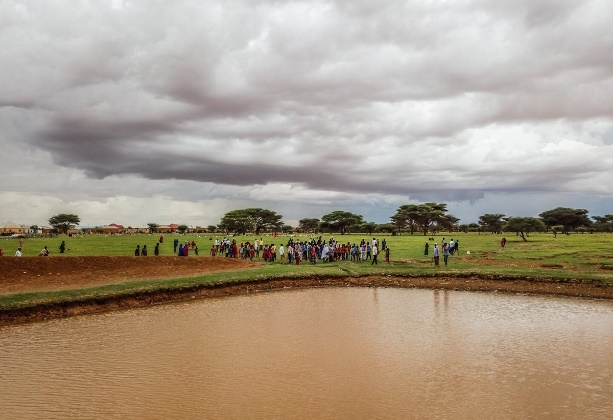Indian Geography is undoubtedly is the most crucial subject and section to be studied for any competitive exam, especially for the UPSC Civil Services. In this section, we will discuss the Northern Mountain region of Indian physiographic. In this chapter, we will discuss the Indian geography in many sub-sections such as the physiography, the soils of India, the drainage system, climates, vegetation, etc.
Physiography of India
Physiography is also called as Physical Geography. So basically here we are going to know about the physical geographical diversity of our country. Based on altitude and slope, India is divided into 6 physiographic regions.
- Northern Mountain Region
- Great Plains of India
- Peninsular Plateau
- Island groups
- Coastal Plains
- Deserts
Northern Mountain Region

The Northern mountain region is a mountain chain. A mountain chain is an outcome of the evolution and development of mountain ranges over different geological ages.


Compressive forces act first at the Eurasian plate end, Karakoram Kailash was first formed. Hence these are oldest and Shivaliks are the youngest. The Southern slopes are steeper since the forces of compression originate on the south side. It was the northward moving Indian Plate which caused the subsidence, folding, and formation of the northern mountain region.
Karakoram Kailash Range

This range originates from the Pamir Knot. K2 or Mount Godwin Austen is the highest peak of the Karakoram and is the second-highest peak in the world. It is now a part of Pakistan Operated Kashmir. Karakoram Pass is the highest pass connecting India and China. It is a Tri-point Between China, India, and Pakistan. It was an old Silk Route The Silk Route was used to export silk from China to India, West Asia & Europe.
The Siachen Glacier on the Karakoram Range is the largest glacier beyond subpolar regions. It is the source of the Nubra River which is a tributary of Shyok River. India had developed control over Siachen glacier in 1984 through operation Meghdoot. This glacier is now the highest battlefield in the world.
Ladakh Range

Khardungla Pass connects Leh with Siachen Glacier and it is open only during summers when it is used for transportation of goods to military outposts. Leh is on the banks of river Indus.
Greater Himalayas

The Greater Himalayan range extends for 2400 km from Nanga Parbat in the North-Western to Namcha Barwa in South Europe. With an average altitude of 6100m, it is the highest mountain range in the world. Mount Everest and Kanchenjunga, which are the first and third highest peaks of the world are present in this range.
The greater Himalayan range is called the Zaskar range in its north-western part in Kashmir. Greater Himalayan ranges are permanently snowcapped. In the north-west, it is intersected by the gorge of Indus and in the south-east, by the gorge of Brahmaputra.
Middle Himalayas

The Middle Himalayas has an altitude ranging from 3500 to 4200 meters. These ranges are famous for their temperate climate, Alpine forests, temperate grasslands, terrace farming, house farming.
These hills are famous for their Hill Stations. Important hill stations are Gulmarg, Patnitop, and Sonmerg on Pir-Panjal, Shimla, Dharamsala, Kullu-Manali on the Dhauladhar range, Nainital, Mussourie on the Mussourie, Darjeeling & Kalimpong in Darjeeling (Northern West Bengal).
Shivaliks Range
The Shivaliks range is made up of Sedimentary rocks. The altitude varies from 1000-1500 meters. These hills are highly prone to landslides due to their sedimentary nature. The Shivaliks ranges are called Abor, Dafla, Miri, and Mishmi in Arunachal Pradesh.
North-East Hills

Northeast hills is a water divide between the Rivers flowing into Myanmar & India (Brahmaputra). Loktak Lake in Manipur is a Tectonic Lake National Floating Park is Located on the Loktak Lake.
Great Plains of India

The Great Plains of India is the combined work Indus, Ganga, Yamuna & Brahmaputra. The combined delta of Ganga & Brahmaputra is the Sunderbans. It is the largest delta in the world. Physiographical, the Great Plains are divided into 4 parts viz, Bhabhar, Teras, Banger & Khadar.
Bhabhar: Bhabhar is a narrow zone 10-15 km wide, all along the south of the Shivaliks, covered with boulders and pebbles that are deposited by rivers due to a steep fall in their flow as rivers enter from mountains to plains. The flow of rivers is below boulders and pebbles. Thus, surface flow is absent. Agriculture cannot be done in this region.

Terrain: It is to the south of Bhabhar where the flow of the river is above the surface. It is a damp and humid zone, covered by forests. Its soil is organic whose Nitrogen, Phosphorus, and humus content is high. These forests are now cleared for cultivating Paddy & Sugarcane. Terrain region suffers from flood and often change in the course of rivers.

Bhangar: It is a relatively high plain located between streams and rivers. It is Old Alluvium which is more mature and is not flooded during the Monsoons.

Khadar: It is lowland along the rivers and streams. It is flooded during the rainy season. It is a zone of New Alluvium which is deposited during the Recession of Flood.

Peninsular Plateau
This is geologically the oldest part of India which contains hills, plateaus, and coastal plains. Let’s have a look at each of the sections of this geological structure.
Hills

There are many hill ranges present in this peninsular plateau. Here are some of the important mountains ranges:
Aravalis: it is the oldest fold mountain of the world extending from Delhi in North European to Gujarat in southwestern. Its highest peak is The Guru Shikhar (1722m) (Rajasthan). It is a water divide between the Indus & Gangetic river system.
Vindhyas Range: It extends from Gujarat in the west to Kaimur Range in Bihar to the east. The altitude is low at 300 to 600 m. It is a Water Divide between the Himalayan Drainage system and the peninsular drainage system.
Satpura Range: It is a Block Mountain surrounded by the Rift Valleys of Narmada and Tapi. It is called Rajpipla Hills in Gujarat, Mahadev Hills in M.P. & Maikal Hills in MP and Chhattisgarh. Dhupgarh on Mahadev Hills is the highest peak of the Satpura range. The Satpura Hills is a water divide between Narmada &Tapi.
Western Ghats

The Western Ghats extend from Tapi to Kanyakumari all along the West Coast of India. It is a Water Divide between East Flowing & West Flowing Peninsular River. The Western Ghats generate the Orographic Effect on Southern Western Monsoon winds. Its leeward side is the Deccan Plateau which is relatively dry due to Rain Shadow Effects.
Eastern Ghats

The Eastern Ghats is a group of hills intersected by cast flowing Peninsular Rivers of Mahanadi, Godavari, Krishna & Cauvery Rivers. It joins the Western Ghats at Nilgiri Hills. Mahendragiri is the highest peak of Eastern Ghats.
Plateaus of Indian Peninsula
Coastal Plains

The Coastal plains are further dived into the parts based on geographical presence, the first is Western Coastal Plains. and the second is Eastern Coastal Plains.
Western Coastal Plains

Konkan, Canara & Malabar Coast are narrow as Western Ghat is close to the Western Coast. The coastline of Gujarat is the longest in India. From Tapi to Kanyakumari, the west coast is straight. Konkan Coast is a Submergent Coast whereas the Malabar Coast is an Emergent Coast. Since Konkan Coast is a submerging coast, it is dominated by Natural Sea Port-like Mumbai Port, Jawaharlal Nehru Port, etc.
Malabar Coast is dominated by coastal lakes or lagoons which are known as Backwater or Kayal. Vembanad and Ashtamudi are the largest backwaters. These backwaters are connected with a canal known as West Coast Canal, which connects Kottapuram and Kollam for a stretch of 205 km which has been designated as National Inland Waterway.
The West Coast is dominated by short and strong flowing rivers and these rivers form Estuary on the coast. An estuary is formed by the submergence of the mouth of a river. Thus instead of the delta, an estuary is formed. The estuaries of the Narmada &Tapi empty to The Gulf of Khambhat, which has the greatest potential for Tidal Energy Production.
Eastern Coastal Plain

The East Coast is of Crescent Shape. It is wide and is covered with the deltas of Mahanadi, Godavari, and Krishna & Cauvery. Deltas are formed by the deposition of sediments on the coast. With the formation of deltas, the coastline extends seaward. These deltas are Convex towards the sea. Some of the important lagoons on this coast: Chilka Lake in Odisha, Kolleru Lake in Andhra Pradesh, and Pulicat Lake in Andhra Pradesh.
Island Groups of India
India consists of two islands, Andaman & Nicobar Islands and Lakshadweep Islands.
Andaman & Nicobar Islands

Andaman & Nicobar Island Groups is an extension of the Arakan Yoma Range of Myanmar towards the Bay of Bengal. Andaman and Nicobar Island group is covered with Tropical Evergreen and Semi-Evergreen forests. These island groups are inhabited by the most primitive tribal groups of India – the Jarawas & Onges.
Lakshadweep Island Group

Lakshadweep is a group of tiny islands. These islands are organic in origin and these are Coral Islands located over the Mid-Oceanic Ridge of the Indian Ocean. These coral islands are circular or elliptical with a lagoon in the center. These coral islands are called ATOLL(s).


